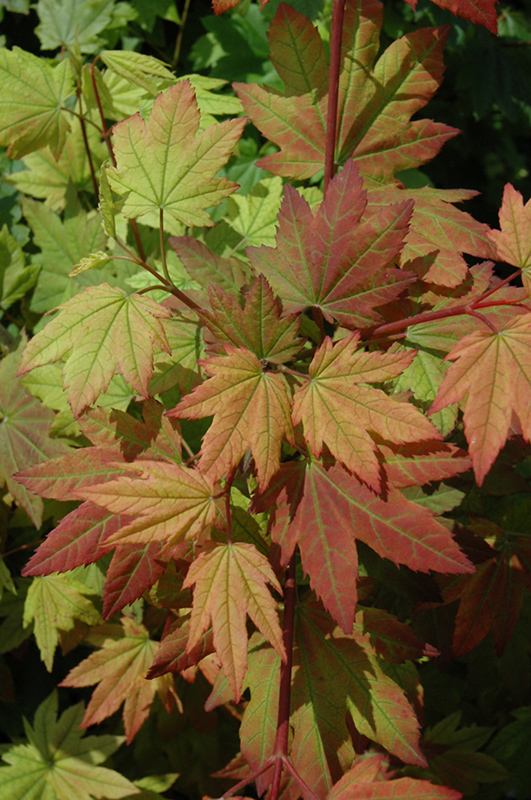
Native to North America from British Columbia to California.Propagate by seed sown outdoors as soon as ripe, by grafting in late winter, or by chip budding in mid-to-late summer.May be affected by verticillium wilt, honey fungus, aphids, caterpillars, mites, and scale insects.If pruning is necessary to control the shape, prune during the dormant season and avoid pruning in spring when the sap is running. Low maintenance, this plant needs little pruning.
#VINE MAPLE LEAF FULL#

Acer circinatum is reported to be the most useful native tree for the landscape in the Pacific Northwest. It can be used as a very attractive patio or lawn specimen or in a naturalizing situation, and grouping. This western North American native is a smaller alternative to Japanese Maples. Vine Maple performs well in cooler climates, or in shaded and moist locations. They are followed by red-winged fruits, which are consumed by songbirds, game birds, and mammals. In spring, tiny purple and white flowers are borne in short terminal clusters. Beautifully colored in most seasons, its broad foliage canopy, elegantly displayed in a tiered pattern, emerges bright green in spring and turns attractive shades of orange and red in the fall. Bees, butterflies and hummingbirds collect the vine. Vine Maple is noted for its nearly circular deciduous leaves to 3-5 in. The graceful vine maple is stunning each fall as its leaves turn to sunset colors of red and gold. It can also affect Japanese Maple.This disease is another fungus that enters through the roots and blocks the water passages inside the tree. Upright in sunny locations, it takes a delicate horizontal habit in the shade. This is a much more serious disease that affects all kinds of maples, but Sugar Maple and Silver Maple are the ones most commonly affected. Its closest relatives are originating from Asia Acer palmatum.

Low-branched, multi-stemmed in habit, it usually develops multi-trunks with bright, reddish-green bark. The Vine leaf maple is native to eastern North America. It provides food, nesting sites, and cover for many birds and mammals.Acer circinatum (Vine Maple) is most commonly grown as a spreading bushy large shrub, but it will occasionally form a small to medium-sized tree. Acer circinatum is also an important species for creating wildlife habitat.

Woodland and rain gardens benefit from this plant along with conventional and ornamental gardens. It is a native plant and is common in forests west of the Cascade Mountains from sea level to 2500 ft. Landscape Use and Ecological Function : Vine maples flourish in moist soil conditions, particularly along shaded stream edges, as an understory tree in coniferous forests, or at the woodland edge.

In sunnier conditions it is often found as a single-stemmed small tree that can grow up to 20 ft. Plant Description: A multi-stemmed shrub that is broadly spreading with twisted, vine-like branches that arch and droop to the ground, eventually rooting to form a thicket.
#VINE MAPLE LEAF PROFESSIONAL#
And, of course, your tree should receive regular visits from an arborist a professional tree doctor to diagnose, treat, and help prevent any illnesses. Proper conditions, such as the right soil and the correct amount of sunlight for any given tree species, will also help.


 0 kommentar(er)
0 kommentar(er)
